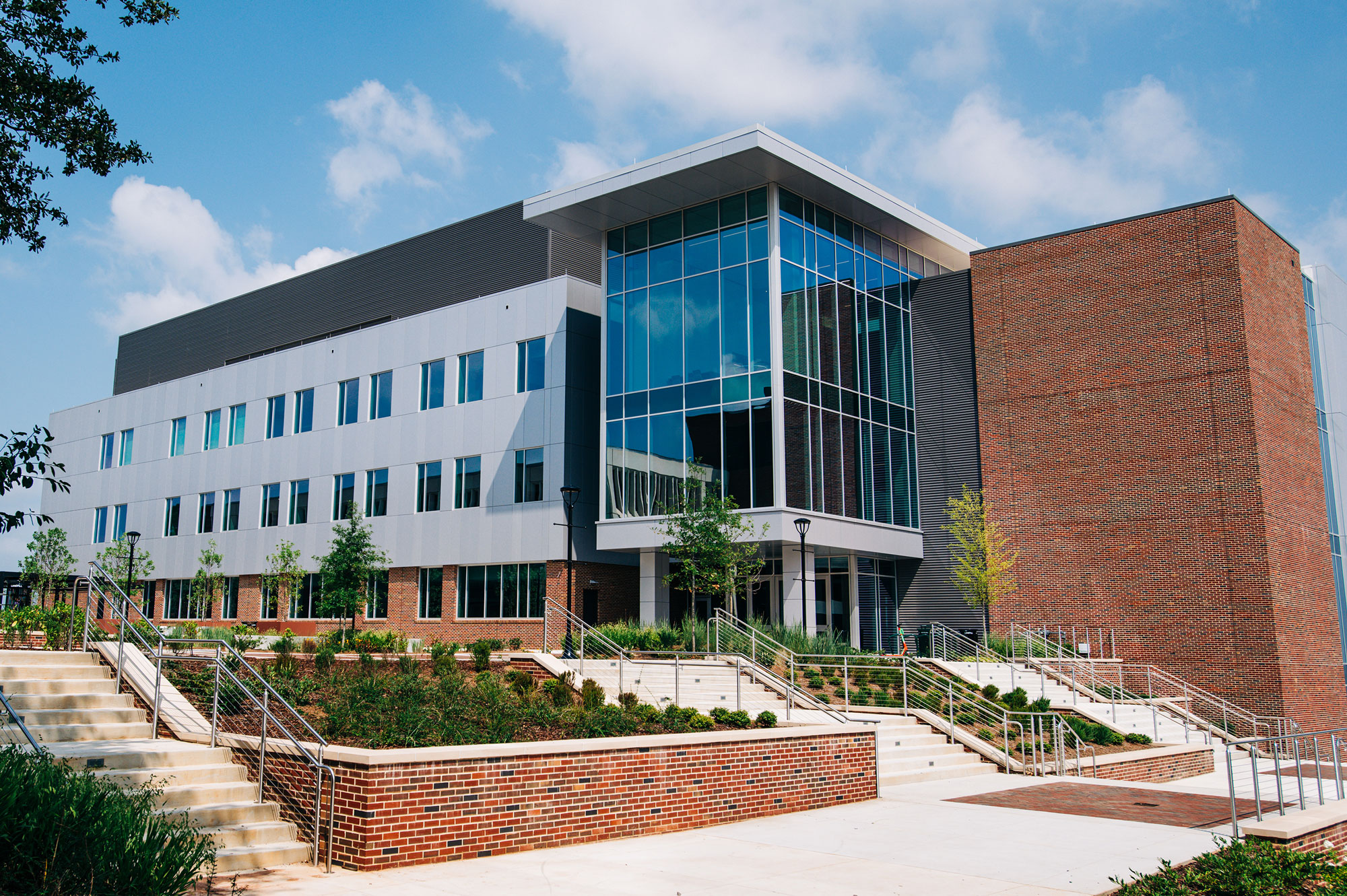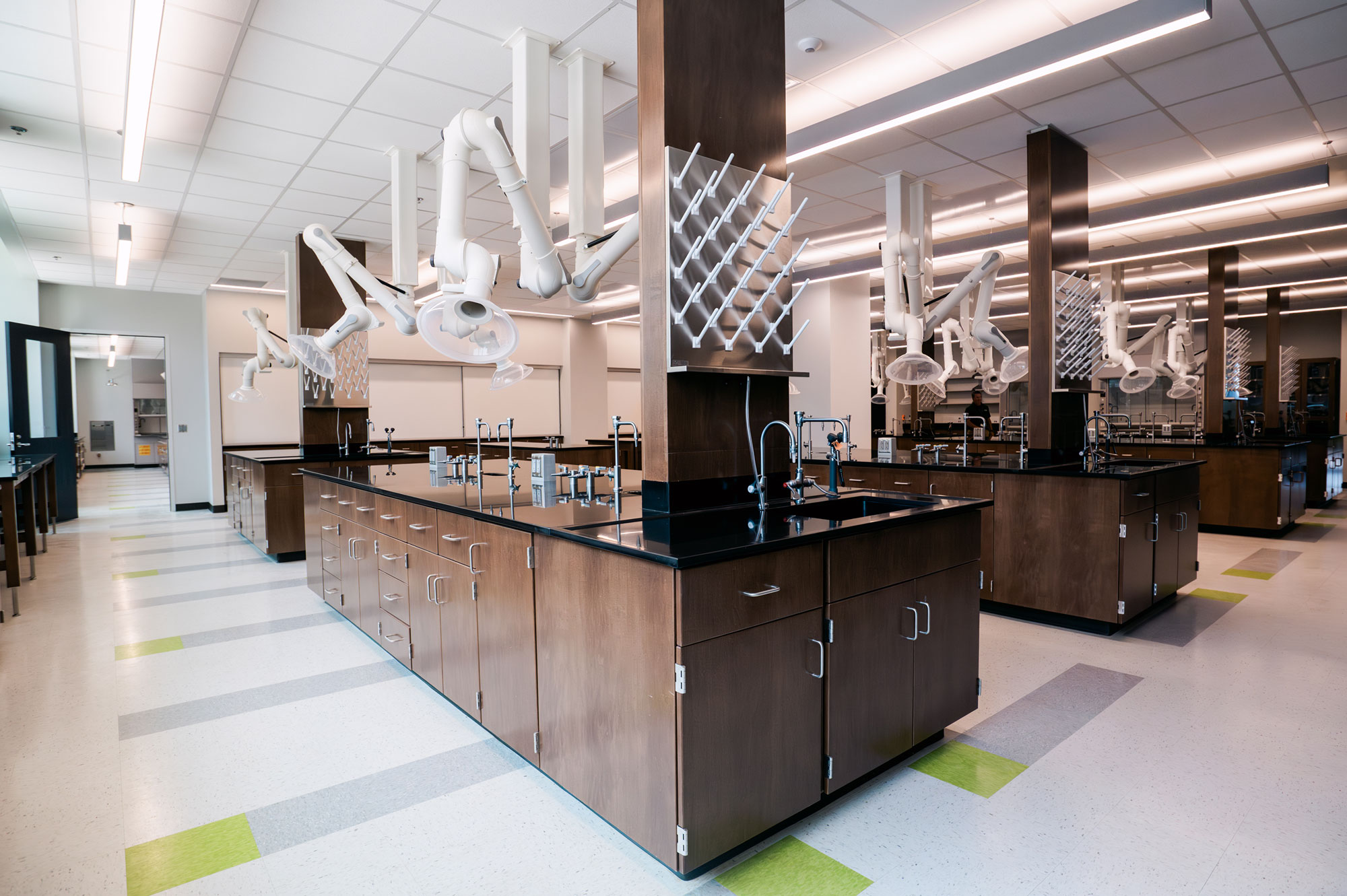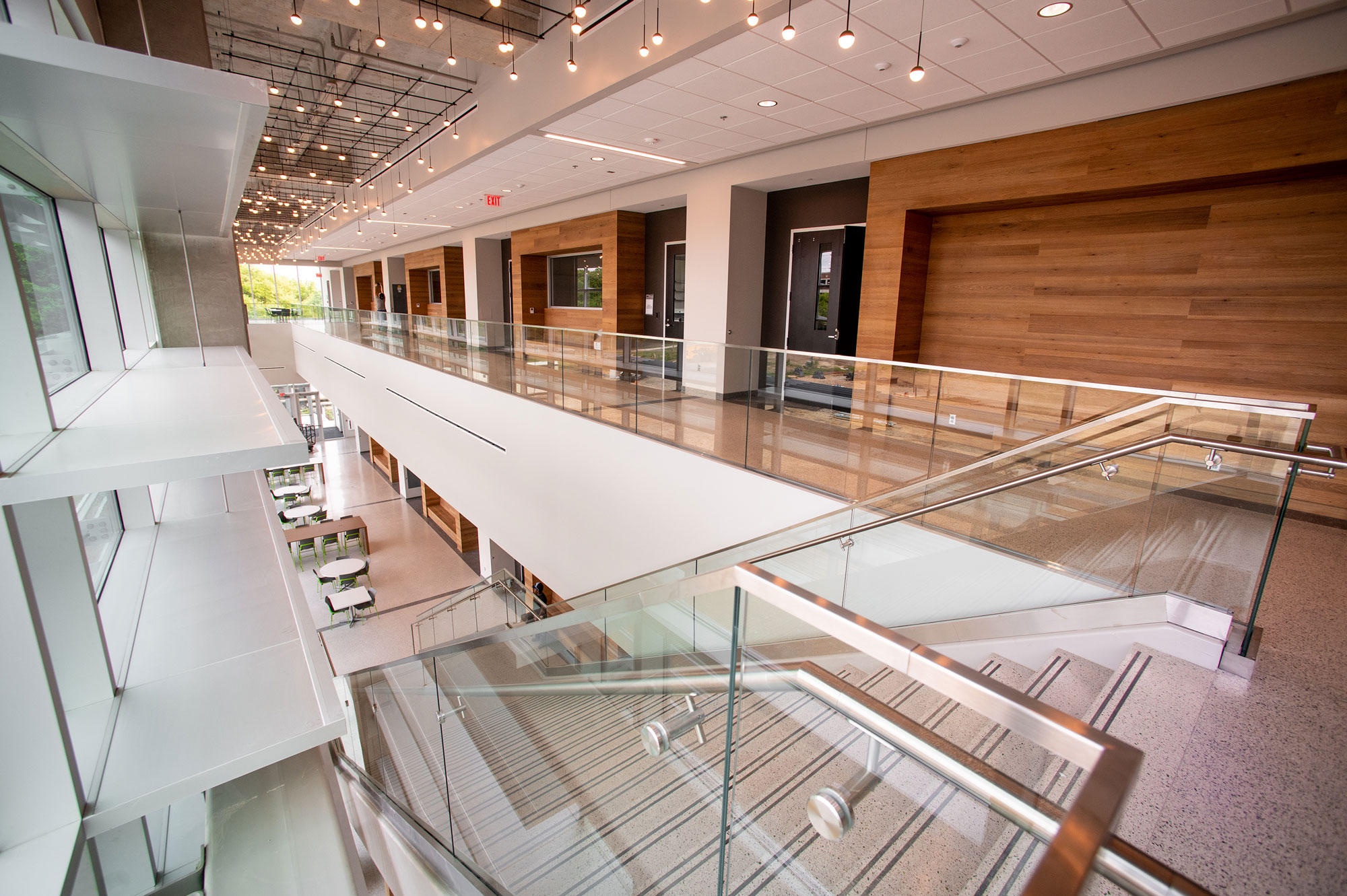 The Department of Biology is excited to have a new home! In Summer 2023, less than two years after breaking ground, the department moved into the brand new $78 million Science and Engineering Complex (Phase I). The 138,000 square-foot facility is now home to UAB’s departments of Biology and Physics, as well as two organic chemistry teaching labs.
The Department of Biology is excited to have a new home! In Summer 2023, less than two years after breaking ground, the department moved into the brand new $78 million Science and Engineering Complex (Phase I). The 138,000 square-foot facility is now home to UAB’s departments of Biology and Physics, as well as two organic chemistry teaching labs.
The state-of-the-art complex features teaching laboratories, research laboratories, administrative offices, and common study spaces – all designed to foster a collaborative environment.
“This world-class facility is designed to encourage conversation and collaboration among students and researchers across biology, chemistry, physics and, eventually, engineering,” said College of Arts and Sciences Dean Kecia M. Thomas. “Regardless of a student’s major, every student who fulfills a lab science requirement in one of those departments will have an opportunity to enjoy this incredible building. Given the proximity to Heritage and University halls, we hope the new building will foster greater interaction among faculty and students across the college, as well as UAB.”
The Science and Engineering Complex represents a significant investment in our students' futures, the future of UAB, and the future of world-changing research that will define our technology, communication platforms, food and water sources, geopolitics, healthcare, the global economy, and the sustainability of our planet.
Building Features
- Two large, state-of-the-art shared research labs and 25 adjoining equipment rooms that improve departmental infrastructure.
- 10 teaching labs configured for teamwork, increased capacity, and engagement with modern instructional equipment. The additional space allows for the creation of new hands-on lab offerings that cover modern concepts in molecular biology. They also enable the department to offer more Course-based Undergraduate Research Experience (CURE) opportunities to undergraduate students.
- Open meeting spaces throughout the building that encourage collaboration, peer instruction, and extracurricular activities.
- Field work operations combined into one cohesive space.

